
Time/Bar scales in Timing Solution
In Timing Solution you can display the price chart using two scales: Time scale or Bars scale. This option is located here:

The general recommendation is: when you download intraday chart, better use BAR scale. In this class I will explain why.
Let's download 5 min. chart for Dow:
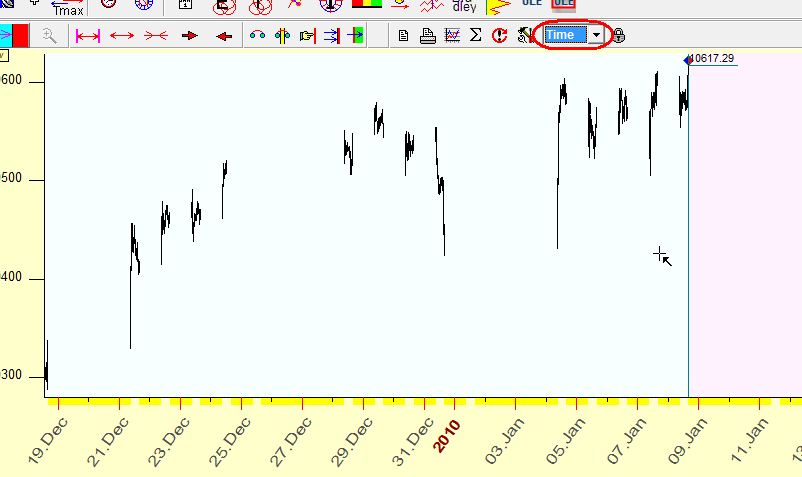
You see there non-trading hours/gaps; they occupy most of the time there. This chart is very difficult to analyze. We can avoid this problem using BAR scale (the same chart as above is shown):
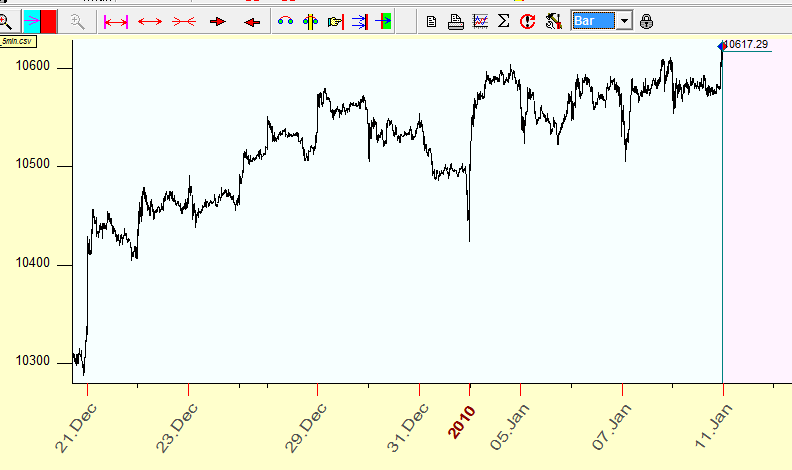
The non-trading gaps have disappeared, and it is much more easier to analyze this chart.
The time scale issue appears again when we apply some charting tools to intraday data. As an example, look at the charting tool that displays the distance between two turning points of the intraday chart:
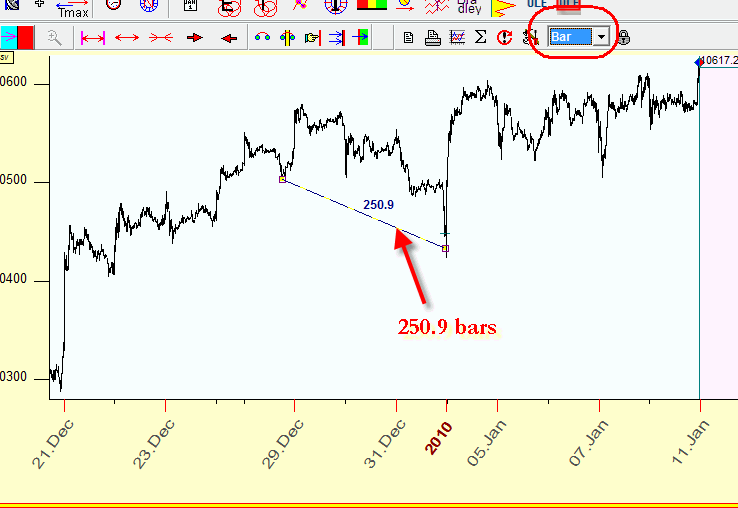
This distance is measured in BARS. If we try to measure this distance in hours, the non trading gaps will smash the whole picture.
It concerns Fourier String charting tool as well; it is better to display this charting tool using Bar scale:
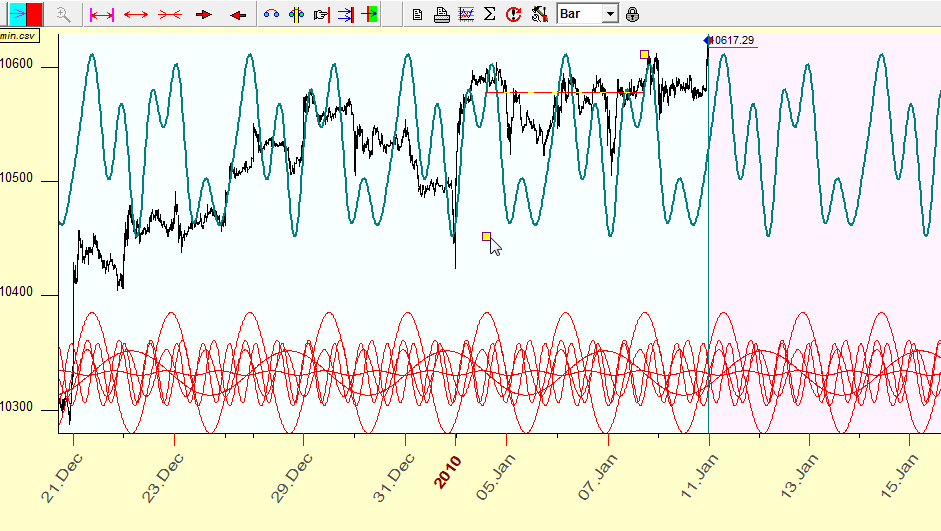
The waves that form this projection line are composed of the cycles measured in BARS.
Also when you calculate Spectrum to reveal dominant cycles for intraday, make sure that Bar metric is set there:
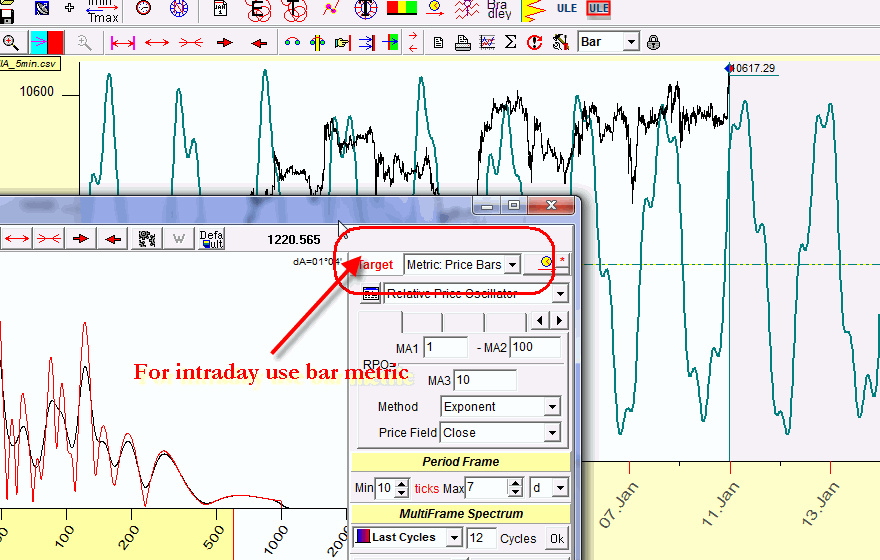
Remember that you should choose the scale type in the beginning; do not mix the scales. As an example not to follow to, see the revealed Time cycles (not Bar) for intraday data; they are shown over the price chart that is displayed in BAR scale:
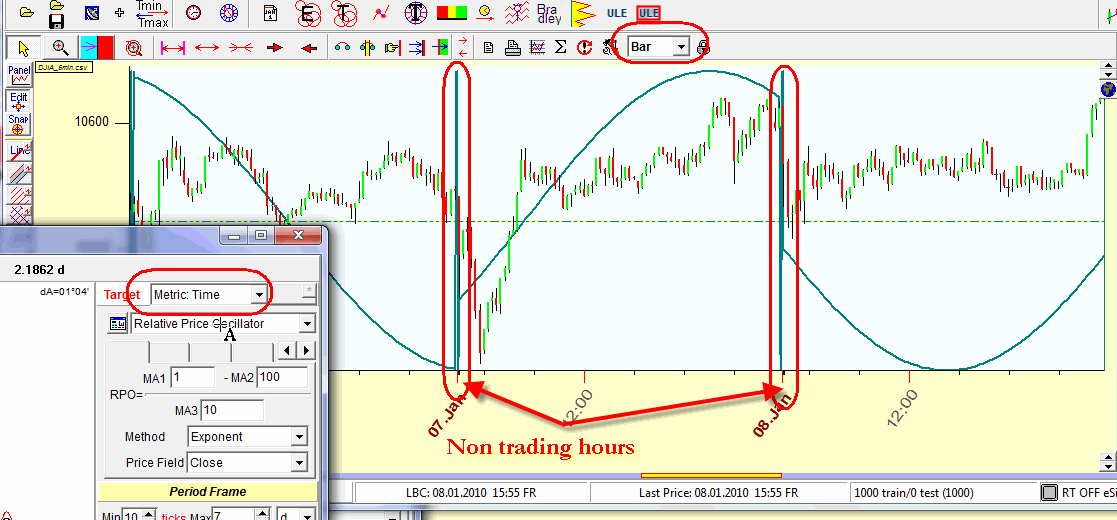
As you see the non trading gaps have appeared: when the cycle is revealed in TIME scale. The time goes on during non trading hours, and these gaps simply reflect this fact.
If we display these same cycles and the price chart in TIME scale, we are able to see how this cycle have worked:
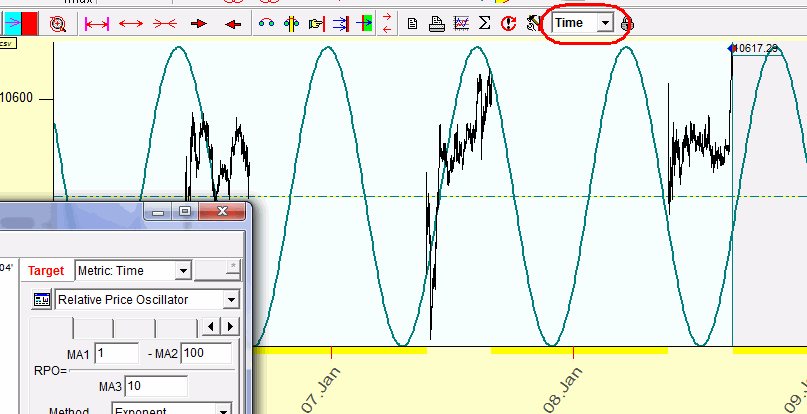
This is why we recommend for intraday data to analyze BAR cycles only, these cycles "sleep" during non trading hours, and this is more close to trading reality.